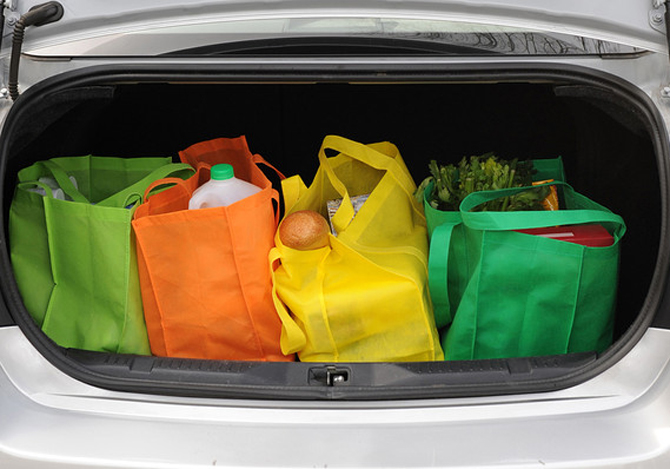This article comes from the City of Asheville Office of Sustainability.
Have you ever wondered if there is a way that you can help the planet through your purchases and service choices? Well wonder no longer, sustainable consumption is the way to go!
What is sustainable consumption?
Sustainable consumption is a way in which we take into account the end-life of our purchases, before we actually buy them. Sustainable consumption seeks to address the problem of waste before it even occurs. It is consuming less as well as differently.
How can I further my sustainable consumption?
Individuals, or even groups, can further their role in sustainable consumption by purchasing goods and/or services that have minimal impact on the environment, are socially equitable and economically viable while still meeting basic needs. Some examples of how to do this include: reusing glass jars and containers, thrift store shopping, sharing goods, and through researching where and how your products are made and choosing less impactful goods and/or services.
Where can I find goods that are already part of the stream?
Thrift or consignment stores, antique shops, yard sales, online websites that help connect people with used and/or unwanted goods.
What should I do with my used and/or unwanted goods?
The purchasing point of products is not the only aspect of sustainable consumption. What you do with your goods after you are done using them is also an important piece. Rather than sending an old good to the landfill as waste, an individual should instead consider the options of PRE-CYCLING, UP-CYCLING, or RE-CYCLING.
Pre-cycling and up-cycling
Reduce and Reach for Zero: PRE-CYCLE
Pre-cycling prevents unnecessary waste by using fewer resources in the first place, and avoiding items which will generate excess waste when there is an alternative. There are many opportunities to pre-cycle in our daily lives.
Try using these tips:
- Use reusable grocery bags.
- Use reusable mugs, water bottles, containers.
- Consider whether items you purchase are durable, made from recycled content, or has too much packaging (be a thoughtful consumer).
- Read news/magazines online instead of buying the print.
- Give an experience rather than a “thing” for a gift (e.g. movie tickets or a restaurant gift certificate).
- Buy rechargeable batteries.
- Compost organic waste rather than throwing away.
- Rent or borrow things whenever possible.
- Avoid disposables and choose reusable or refillable products (e.g. razors).
- Buy local — there is less transportation and packaging involved.
- Use permanent coffee filters and compost the grounds.
- Can you buy the item used and/or at a thrift store instead of new?
Before you throw something away, can you “up-cycle” it into something new?
Reuse and Reach for Zero: UP-CYCLE
Up-cycling is when a new item like a handbag, clock, or pet bed is created out of discarded materials like candy wrappers, used bicycle parts, or suitcases. Up-cycling is increasing in popularity as artists and retail manufactures alike see the positive benefits and opportunities. Opportunities to reuse materials at home can be economical and fun. Up-cycling asks the question: before you recycle, can you reuse the item (e.g. a jar) for another purpose?
Sustainable consumption practices include:
- Repair and maintenance of products, to extend the useful life of products.
- Reuse of products.
- Sharing of products (and services), including borrowing and rental; such efforts reduce idle product time, increase efficiency, and reduce need for consumption of as many new products.
- Use of durable, long-lasting, and upgradeable products.
- Use of lower-impact products made using materials and resources that are rapidly renewable, replenishable and less toxic.
- Reducing Consumption—that is, buying and using less (which the above practices also support). Reducing consumption does merely revolve around durable goods. We can work to reduce our consumption through our transportation choices, such as our decision whether to walk, bicycle, or carpool to work.
